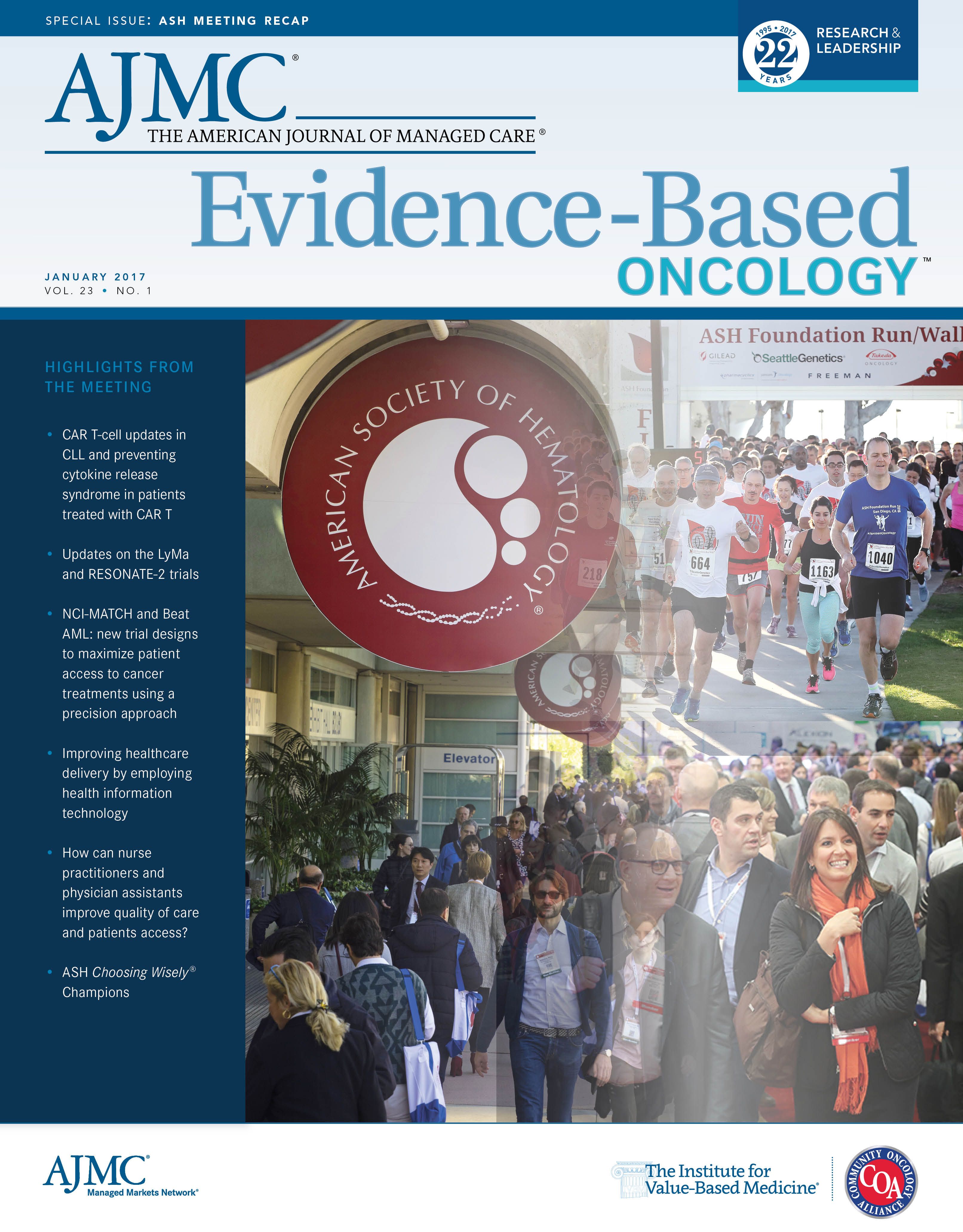- Center on Health Equity & Access
- Clinical
- Health Care Cost
- Health Care Delivery
- Insurance
- Policy
- Technology
- Value-Based Care
Healthcare Utilization and Costs Associated With the Treatment of Relapsed/Refractory MM
A poster presented at the 58th Annual Meeting & Exposition of the American Society of Hematology compared the utilization patterns and associated costs for recently approved and older drugs in patients with relapsed/refractory multiple myeloma in the United States.
A POSTER PRESENTED
on the second day of the 58th Annual Meeting & Exposition of the American Society of Hematology compared the utilization patterns and associated costs for recently approved and older drugs in patients with relapsed/refractory multiple myeloma (rrMM) in the United States. The results can help inform future economic evaluations for these drugs.
Using data from the Truven Health MarketScan Commercial and Medicare Database, the study retrospectively evaluated the utilization of carfilzomib (Kyprolis), pomalidomide (Pomalyst), and panobinostat (Farydak) for the treatment of patients with rrMM following failure of at least 2 prior standard therapies. Patients (older than 18 years) who were diagnosed with MM between January 1, 2006, and May 31, 2015, were included in the study if they had not undergone stem cell transplant and had been continuously enrolled in treatment at least 6 months before and at least 1 month after their first diagnosis of MM and treatment initiation. For the healthcare resource utilization and cost analysis, the authors included only those patients who had at least 6 months of continuous enrollment after treatment initiation.
If 2 or more drugs were started within 90 days, they were considered a single regimen. A treatment gap of at least 90 days or introduction of a new treatment, whichever occurred first, defined the end of a line of treatment (LOT). Time to next treatment (TTNT) was defined from initiation of the LOT to initiation of subsequent LOT; Kaplan-Meier analysis determined the duration of treatment (DOT) and TTNT. Treatment regimens were classified into the following 6 mutually-exclusive categories:
- Bortezomib (bor)
- Lenalidomide (len)
- Pomalidomide (pom) 
- Carfilzomib (car)
- Thalidomide (thal)
- Other therapies
For the eligible patient population, the healthcare resource utilization and the monthly cost for each patient were calculated. The total costs included inpatient, outpatient, and pharmacy costs.
During a 20-month follow-up period among the 9960 patients (57.4% of whom were male) following the first line of therapy, 3282 (33.0%), 1103 (11.1%), and 400 (4%) patients initiated second-, third-, and fourth-line treatment, respectively. The most common third-line treatment included bor-based (43.5%, including 10.5% for bor-len) and len-based regimens (29.8%), the authors report.
Median DOTs ranged from 3.7 months for car-based regimens to 8.1 months for len-based regimens; median TTNT was car-, pom-, bor-, len-, other-, and thal-based regimens—in increasing order. Each patient with rrMM averaged 4.5 outpatient visits, 0.1 inpatients visits, 0.1 emergency department visits, and 0.004 hospice care visits each month. The authors estimated the following average monthly costs for each patient:
- Bor-based regimens: $14,286 Bor monotherapy: $10,838 Bor-len: $17,917 Bor-other: $16,359
- Len-based regimens: $13,377 Len monotherapy: $11,859 Len-other: $23,746
- Pom-based regimens: $25,850 Pom monotherapy: $20,121 Pom-other: $44,402
- Car-based regimens: $21,180 Car monotherapy: $20,322 Car-other: $24,283
- Thal-based regimens: $11,919 Thal monotherapy: $12,066
The retrospective analysis showed that bor- and/or len-based regimens remained the most commonly used therapies in the third-line setting despite the addition of new treatments to the armamentarium of available options. Further, the monthly treatment costs per patient were higher for pom- and car-based regimens, the authors report. REFERENCE
Shao C, Monberg M, Cao X, Zhou W, Zhong Y, Marinello P. Real-world treatment patterns, health care utilization, and costs among relapsed/ refractory multiple myeloma (rrMM) patients. Presented at: 58th American Society of Hematology Annual Meeting & Exposition; December 4, 2016; San Diego, CA. Abstract 3555.

Oncology Onward: A Conversation With Dr Shereef Elnahal, Under Secretary for Health
April 20th 2023Shereef Elnahal, MD, MBA, under secretary for health at the Veterans Health Administration (VHA), sat for a conversation with our hosts Emeline Aviki, MD, MBA, Memorial Sloan Kettering Cancer Center, and Stephen Schleicher, MD, MBA, Tennessee Oncology, that covered the cancer footprint of the VHA.
Listen
Integrated Care for Chronic Conditions: A Randomized Care Management Trial
December 3rd 2025The authors sought to understand the differential impact of payer-led community-based care management approaches on stakeholder-oriented outcomes for publicly insured adults with multiple chronic conditions.
Read More

